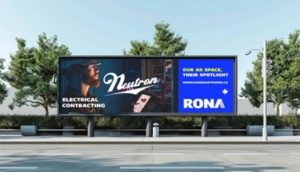Canadian Broadcast Sales (CBS) partnered with Brainsights to discover how radio is different than other advertising forms.
It was its first time working with Brainsights. The goal, said CBS president Gerry MacKrell, was not to prove that radio was better than any other form of advertising, but rather to understand what specific impact radio buys have on consumers, and how the ads tie to purchases.
“We can do all sorts of quantitative analysis in terms of how many people are listening, how many people we reach, but the one area we felt was a gap was, ‘How does a radio impression impact cognitively?,'” he told MiC.
It’s not the kind of thing people can self-report, said MacKrell, which is why the study used electroencephalography technology (the recording of electrical activity in the brain) to study the reactions of 100 Canadians during and after exposure to 32 different radio commercials across a variety of categories. Subconscious engagement was measured across three key areas: awareness, connection and encoding. The study was the first of its kind for CBS.
The study also exposed people to advertising across various media in order to create benchmarks on how radio performed.
For conscious attention during the ads, radio performed at the benchmark for general advertising, as well as for TV advertising. It was, however, 11% lower than the benchmark for digital advertising. In the “connection” category, which indicates deeper attention being paid to the commercial and intent to purchase, it also performed at the benchmark for general and television advertising, but 10% higher than digital. It also scored higher than all benchmarks for “encoding,” the actual memorability of the ad.
The highest rate of memorability was for ads in the e-commerce category (35% above the general benchmark). MacKrell said he was slightly surprised that CPG also performed at 9% above the benchmark for memorability, given that it’s not seen as a very radio-friendly category.
“We hear a lot of ‘true-isms’ about radio advertising,” he said. “We always hear that it’s a call-to-action media, which is good for retail, offer-based advertising, automotive and not so good for CPG. But the results told us that none of that is true.”
He added that even categories such as health and beauty, which are commonly associated with visuals, tend to do well as long as the creative is purpose-built for radio.
He said the optimization of radio creative has possibly created a chicken-and-egg scenario when it comes to category stereotypes. “We’ve always said that offer-based advertising works on radio. But tactical offers are most often purpose-built for radio. That makes us ask if it’s not whether radio works for a category, but rather, the message.”
























